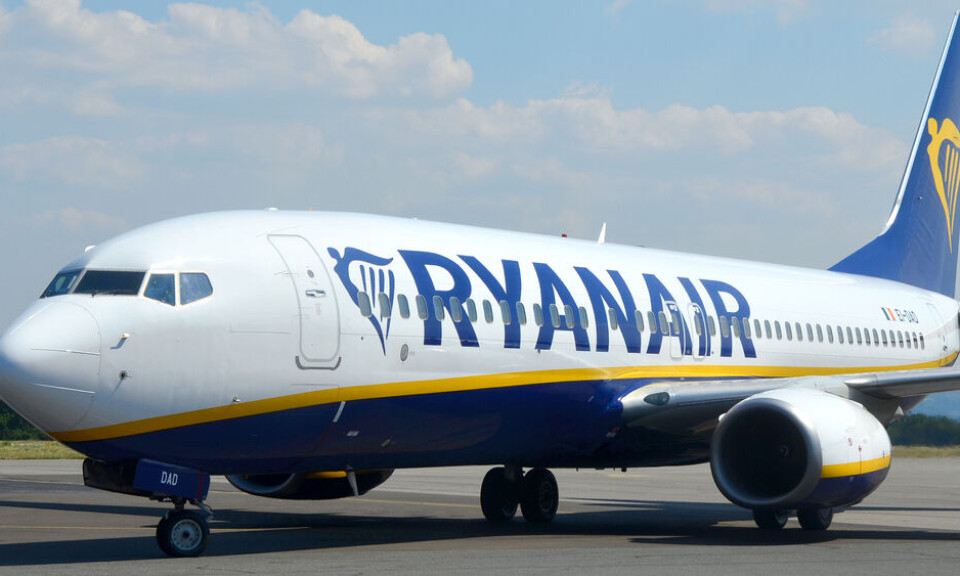-
Cold Christmas in France, but little chance of snow
High-pressure system will move into France from north-east at the start of next week
-
British ‘Puppet Master’ conman in French jail wins phones back on appeal
Robert Hendy-Freegard was given a six-year sentence after hitting two gendarmes with his car
-
Alleged British hacker in jail in France offers to help with police data breach
Recent attack targeted police files
What is so fishy about Brittany?
Loved by both French and British, the region surprises those who see it as a sleepy backwater – and has unusual features
ASK people what makes Brittany special and they will speak about its beauty, authentic lifestyle, lack of traffic jams and, of course, its crêpes – but none will mention its classic seafood dish – because it does not have one.
Despite 1,700 miles of coastline, delicious langoustines and sumptuous seafood platters it has never created a fish dish to rival the Provençal Bouillabaisse.
This month’s Connexion has an in-depth look at a region that French people regard as their “country cousin” – a bit backward and slow but still authentic and quiet with landscapes and a lifestyle for lazing in.
Our exclusive poll discovered some surprising facts about a way of life that has retained old-style virtues while still managing to come bang up-to-date – and pinpointed why Britons love the Breton experience.
You can find out more in The Connexion this month, found in all good paper shops and supermarkets – see where it is on sale here at www.findthepressinFrance.com – or you can click here to download a copy online here for €3.50.
Meanwhile, for some unusual facts on Brittany, read on... and discover its favourite foods and why it does not have a classic seafood dish.
Curious Breton sports
The modest and charming market town of Guerlesquin in northwest Brittany hosts two world championships: weighted bowls and tossing the monolith.
Weighted bowls are also known as boules plombées or, in Breton, ‘Boulù Pok’ and - as the name suggests - each ball is weighted so that it never rolls straight, requiring particular skills of play.
As for the World Championship of tossing monoliths, there are various stones to suit the different categories of competitor (children, women, under 20s and over 20s).
The next Boulù Pok Championships are next month, on Shrove Tuesday, February 17 and the monolith tossing championships are on August 6.
Brittany: home of the stethoscope inventor
The stethoscope, not only indispensable but also iconic when it comes to medical staff, was invented by Breton René Laënnec (1781-1826).
Born in Quimper, Laënnec later studied and worked in Paris, where he devised the first type of stethoscope – using a hollow wooden tube – back in 1816.
Always drawn back to Brittany even throughout his professional career, Laënnec returned when he realised he was terminally ill, a fact ironically confirmed by using the stethoscope.
“Feeling his heart grow weak, he headed back to his dear homeland, his sweet Brittany,” recalled his contemporary Le Caër.
Brittany, Helsinki and Wales?
According to a study of well-being in European regions, the profile of Brittany is very similar to that of Helsinki in Finland, as well as west Sweden, Wales and Canada’s New Brunswick.
The study, conducted by the Organisation for Economic Co-operation and Development, included 363 regions within its 34 member countries and analysed statistics on income, health, jobs, education, civic engagement, environment and access to services.
In case you wondered, Brittany is also the top French region for education and for civic engagement (represented by voter turnout).
It makes the pyramids look young
When it comes to impressive ancient monuments, the pyramids get a lot of press coverage. However, Barnenez Cairn, tucked away on the Breton coastline, is a burial chamber that makes the pyramids look like new kids on the archaeological block.
Measuring 25m by 75m and standing 6m high, this cairn dates back to around 5000BC. This makes it one of the earliest megalithic monuments in Europe, predating the oldest Egyptian pyramid by more than 2000 years.
That Breton cartoon is real!
If a caricatured Englishman has a bowler hat and briefcase, the French equivalent must be a man on a bike wearing a striped top, a beret and onions around his neck. Bizarrely, this is a true historical figure.
The story began in 1828 with the peasant, Henri Olivier. At the age of 20, he and four friends hired a boat to try selling Roscoff onions over in Britain. It was a huge success.
By 1931, around 1500 Bretons sailed to sell onions in England, travelling by bike. As most were called Jean, they were nicknamed ‘Johnnies’.
Water, water everywhere – but no fish dishes?
Crêpes top any list of Brittany’s specialities and, since featuring on The Great British Bake-Off, Kouign Amann cake might get a mention - and the French would add pork, pâté and perhaps the peasant casserole Kig Ha Farz.
Where are there no classic fish recipes? Michelin-starred chef Olivier Roellinger suggests that this is because Celts have always believed that Hell is to be found at the bottom of the sea.
Also, perhaps more logically, that as so many Breton fishermen have lost their lives at sea, families couldn’t bear the idea of eating an animal that might itself have eaten a loved one.
CRTB-E Berthier
























